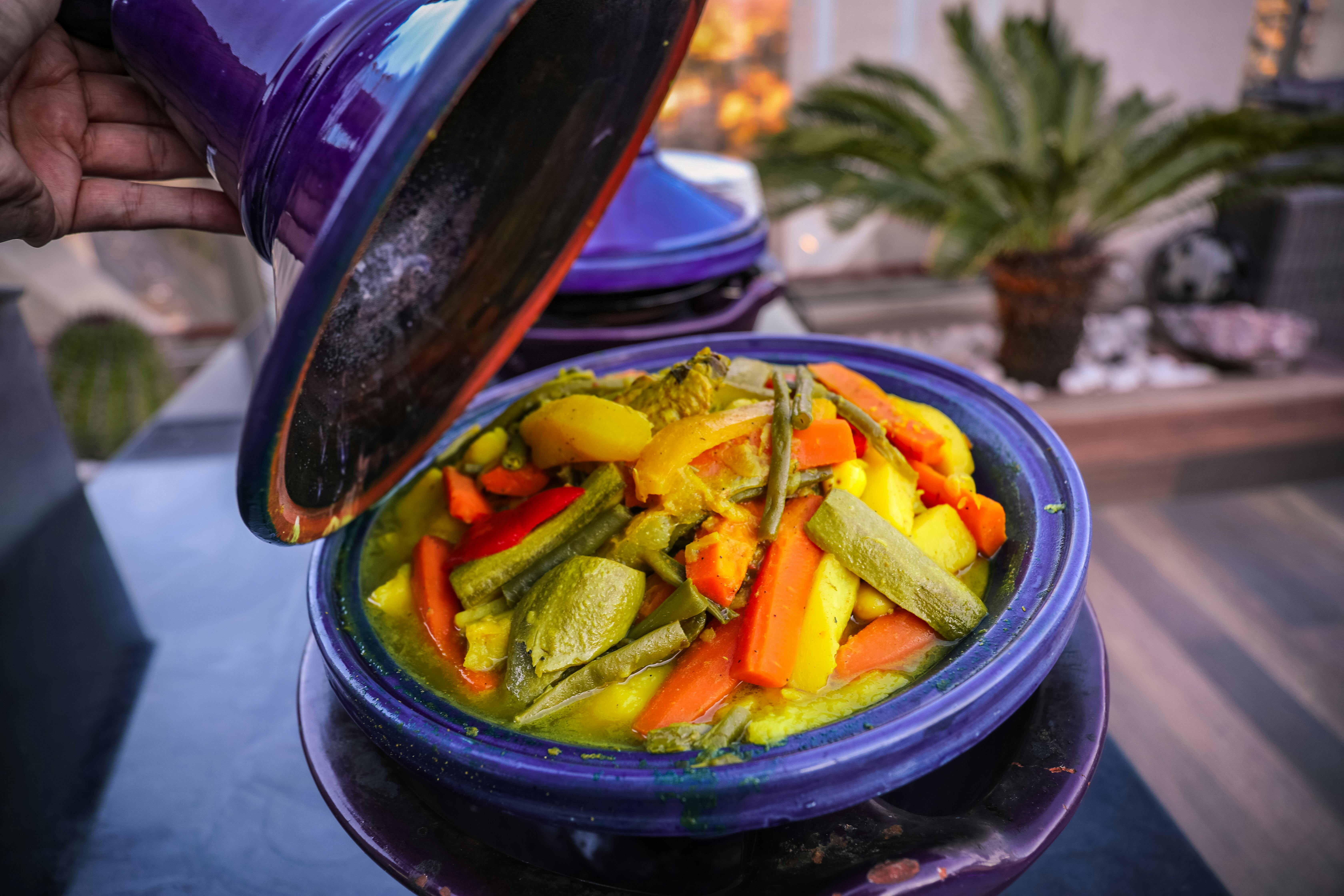Savoring the Delights of Moroccan Cuisine: A Gastronomic Journey
Moroccan cuisine is a rich blend of culinary practices, flavors, and techniques that have been perfected over centuries. Bursting with a variety of spices, textures, and colors, this cuisine reflects the country's complex history and diverse cultures. Let's embark on a gastronomic journey to explore the delectable treats of Moroccan cuisine.

Experiencing the Magnificence of Tagine
Named after the conical earthenware in which it is cooked, Tagine is a slow-cooked stew that stands as a testament to Morocco’s vibrant culinary heritage. It is a flavorful medley of meat, vegetables, and a unique mix of spices that include saffron, cumin, and cinnamon. Cooked over an open fire, the tagine’s aromatic flavors are intensified, resulting in a dish that is as much a feast for the senses as it is for the palate.
Discovering the Magic of Couscous
No exploration of Moroccan cuisine would be complete without couscous. Often considered Morocco’s national dish, couscous is tiny semolina granules traditionally served with a savory stew. The preparation involves painstakingly rolling semolina by hand, a labor-intensive process that exemplifies the care and devotion Moroccans put into their food.
The Sweet Indulgence of Moroccan Pastries
Moroccan cuisine also boasts an array of mouth-watering pastries. Pastilla, a sweet and savory pie traditionally made with squab or pigeon, is a must-try. Its layers of crispy filo pastry are filled with spiced meat and dusted with powdered sugar and cinnamon. Another beloved sweet treat is the chebakia, a honey-coated sesame cookie that is typically enjoyed during the holy month of Ramadan.
The Enchanting Ritual of Moroccan Mint Tea
Moroccan mint tea, also known as ‘Moroccan whiskey’, is at the heart of Moroccan hospitality. This refreshing blend of green tea, fresh mint leaves, and copious amounts of sugar is not just a beverage, but a tradition. The tea is served three times during a gathering and each cup signifies a different aspect of life: life, love, and death.
The Art of Moroccan Bread Making
Bread, or Khobz, is a staple in Moroccan cuisine and is served with every meal. It’s made from a mixture of whole wheat and white flour, and is usually round and flat. The bread is baked in community ovens, fostering a sense of togetherness and community spirit.
Interesting Insights
- The use of preserved lemons is a distinctive feature in Moroccan cuisine, offering a tangy flavor to many dishes.
- Morocco is one of the world’s largest exporters of saffron, a spice that’s integral in Moroccan cooking.
- The traditional method of eating in Morocco is using the right hand, with bread serving as a utensil.
Exploring Moroccan cuisine is a journey into a world of exotic flavors and culinary traditions steeped in history. Each dish, from the hearty tagine to the refreshing mint tea, tells a story about the country’s rich cultural heritage. It’s not just food, but an experience that engages all five senses, making Moroccan cuisine a gastronomic treasure worth discovering.





